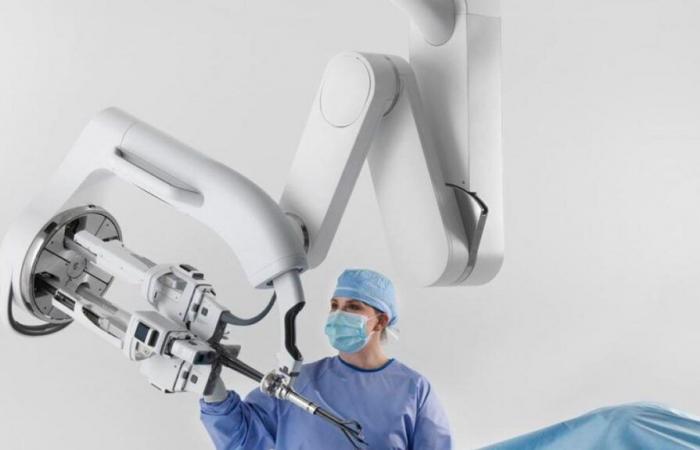LMinimally invasive surgery with robotic assistance consists of carrying out interventions without the need to make large incisionsexplains Dr Enrica Bentivegna, gynecological oncology surgeon at the European Georges-Pompidou Hospital (AP-HP). We perform the operation through small incisions of less than one centimeter, which helps avoid aesthetic after-effects, reduce post-operative pain and improve recovery.».
Le Dr Bentivegna poursuit: «Very fine instruments are inserted through the incisions, and this is where the robot comes in. It acts as an intermediary between the hand of the surgeon and the patient. Additionally, the surgeon’s vision is magnified and three-dimensional, literally immersing him inside the patient’s body. This makes surgical procedures more precise and respectful of internal structures, reducing the risk of complications.».
The new da Vinci SP, a major innovation
In this area, a major innovation has just seen the light of day in France. “Il s’agit du robot da Vinci SP Single-Portspecifies Professor Céline Chauleur, head of the gynecological and oncological surgery department at Saint-Etienne University Hospital. Single-Port means only one incision to be made by the robot compared to four previously. This therefore further reduces the number of scars. I think this will be particularly useful for gynecological surgeries. We also carried out the first intervention on September 27. It was a simple hysterectomy, but our goal is to develop this technology for other indications.»
An optimal surgical technique for women?
Initially, this technology was used primarily in urology, but it later expanded to other specialties such as gynecology. “It was initially reserved for gynecological oncological surgerynamely Dr Bentivegna.Particularly for cancers such as endometrial cancer. The robot allows tumors to be removed very precisely, while preserving healthy organs around them. This is crucial to ensure a good recovery after the operation and to be able to quickly receive additional treatments if necessary. Subsequently, the robot has also proven to be very useful for treating benign conditions, such as endometriosis, fibroids or genital prolapse, where it is important to respect the surrounding tissues while removing the lesions.»
Benefits for patients and healthcare professionals
Today, thanks to these new efficient tools, it is possible to drastically reduce incisions. So much so that according to Professor Céline Chauleur, “scars can almost become invisible or at least more and more discreet. Minimally invasive techniques also help accelerate patient convalescence and reduce complications. The main advantage is that by reducing complications we can also increase outpatient care, meaning patients can go home more quickly after a procedure.».
For Coralie Marjollet, President of the IMAGYN Association (association of patients and relatives affected by gynecological cancers), “the benefits for women are immense, both aesthetically and functionally. It is imperative that they are now directed towards expert centers so that they benefit from the latest technological progress.»
As for surgeons, they benefit from real operating comfort, with optimal vision of the operating field. “CThis system allows us to perform much more precise gestures and therefore more complex operationsmini-invasively”, Dr Bentivegna testifies.
Morocco






